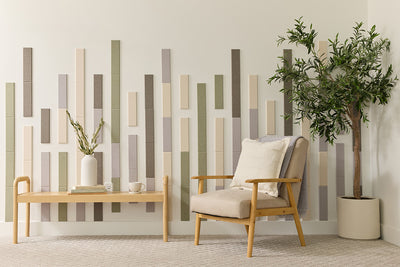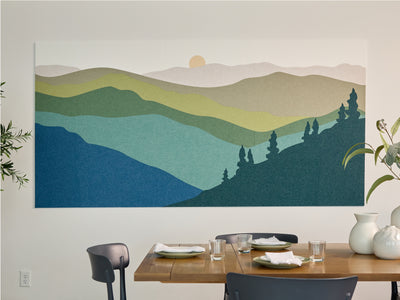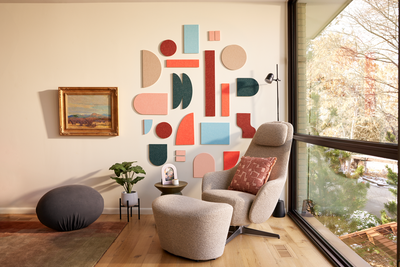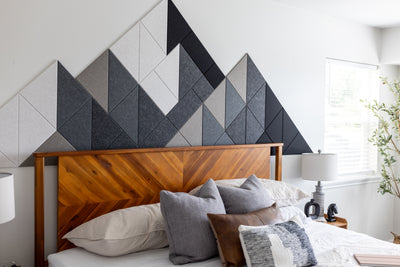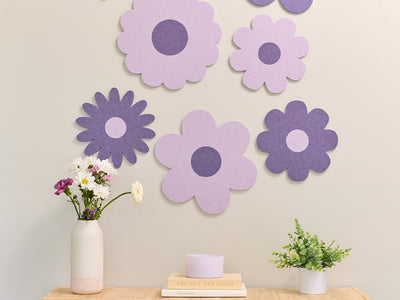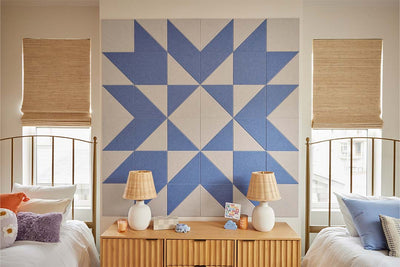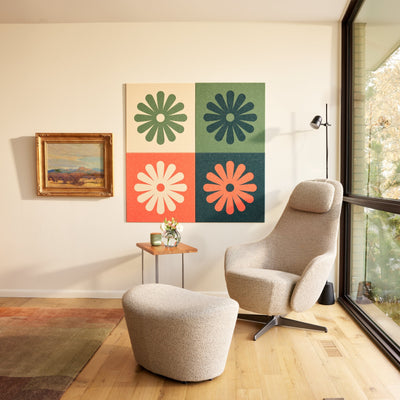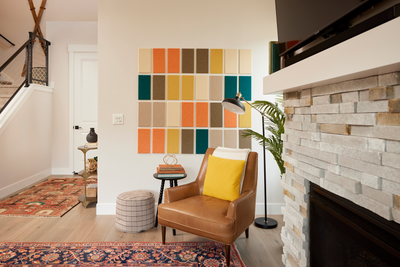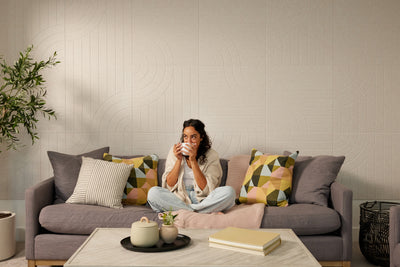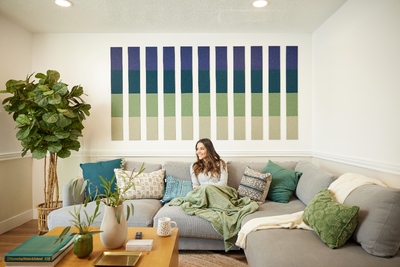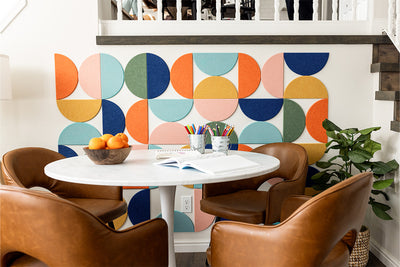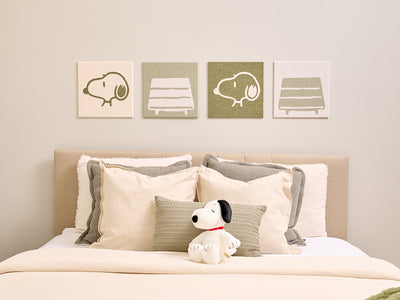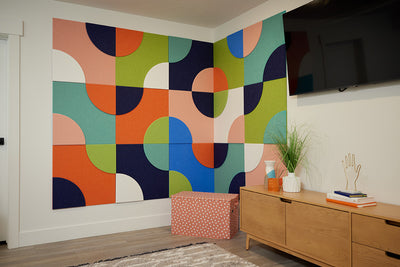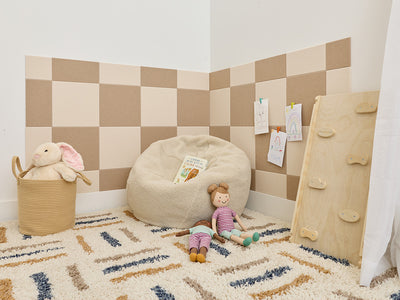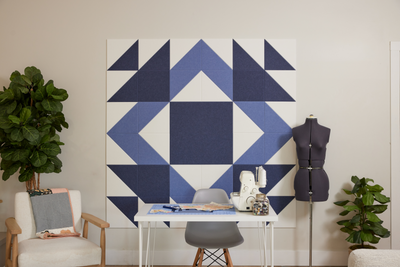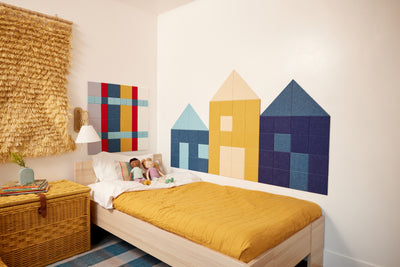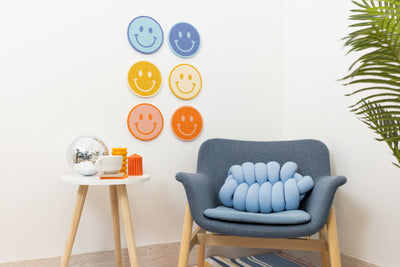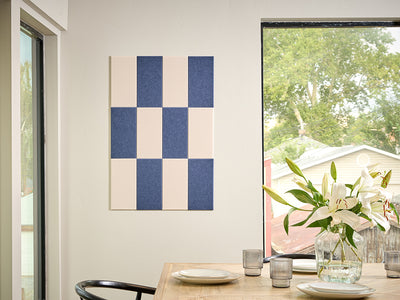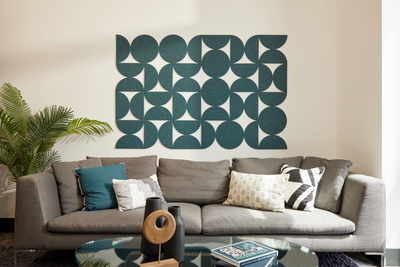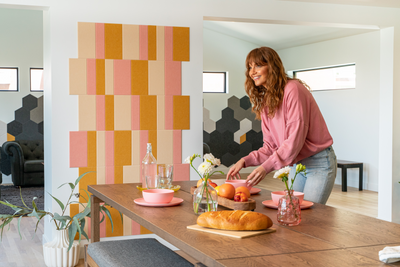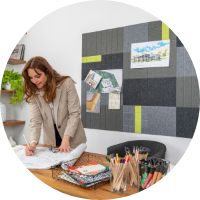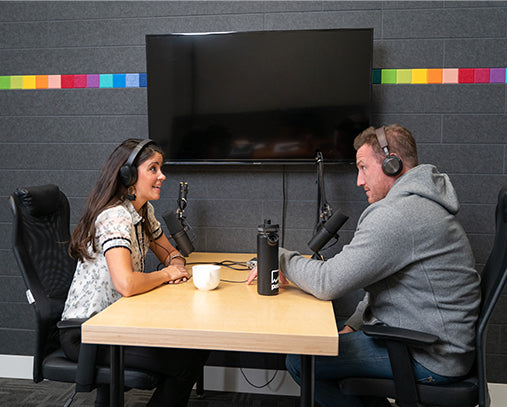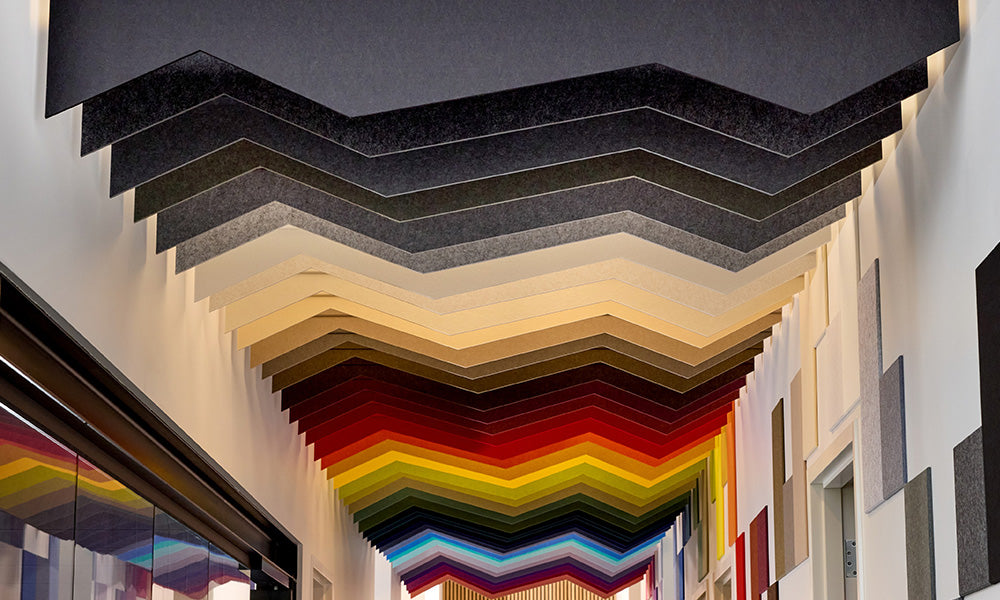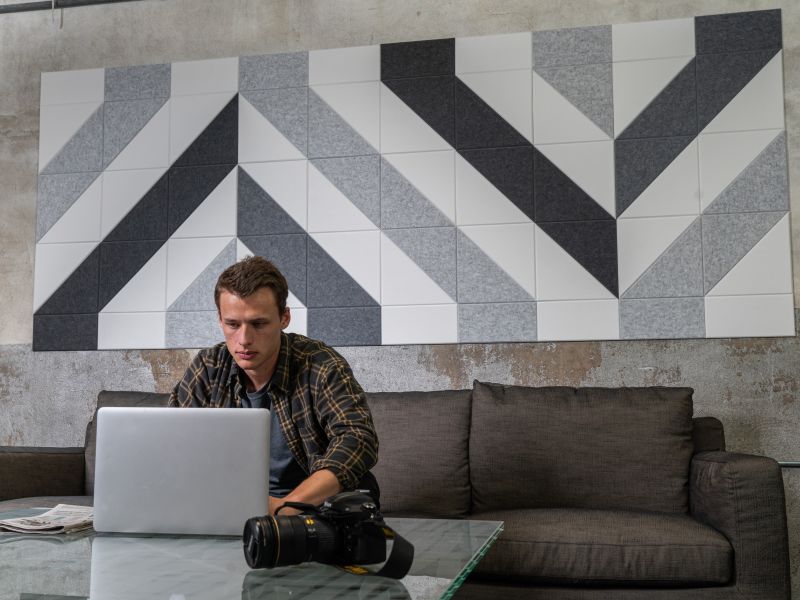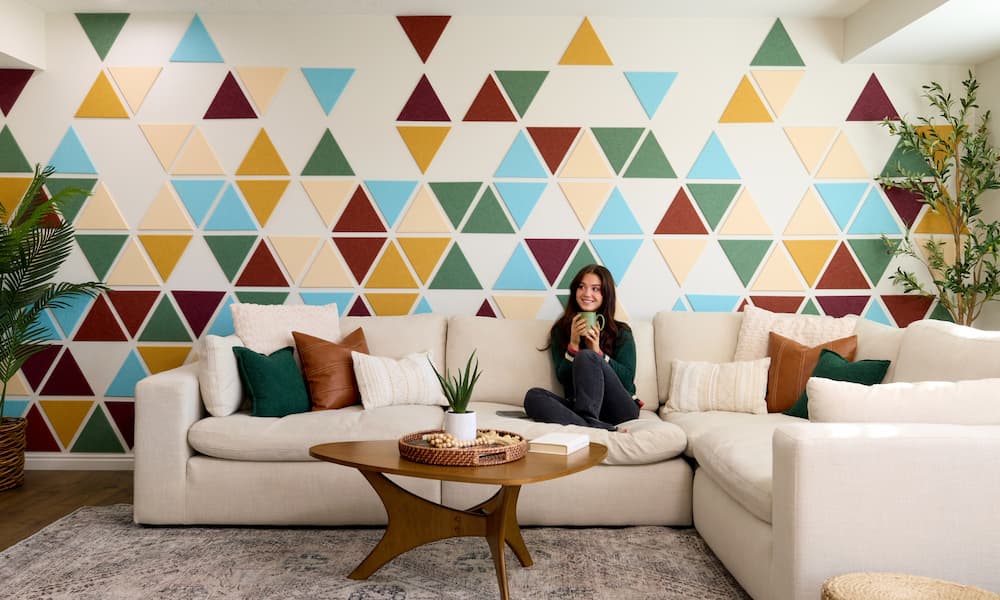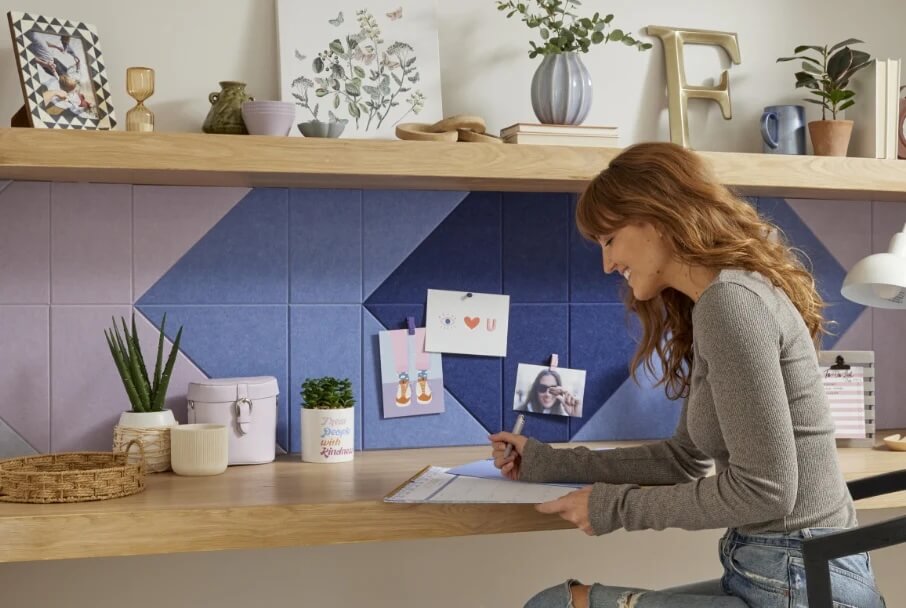Any professional or semi-pro recording environment should be exceptionally quiet (40 dBA or less, ideally 20-30 dBA) and the room should typically never show up in recordings. Achieving this often requires lowering background noise, treating room reflections and reverberation, and controlling sound leakage from adjacent spaces. Felt Right acoustic tiles can be an effective part of the solution especially when it comes to vocal reflections. While we encourage audio enthusiasts to take a deep dive, here’s advice on what to tackle first for the greatest sound benefit.
Acoustic Considerations

Reduce Room Echo when using Mic

Microphone pickup patterns

Desks, tables, and computer monitors add additional reflection points

Background Noise Levels
You Ask. We Answer
Acoustic Solutions

ADD ABSORPTION (A LOT)
Seal non-critical openings between noisy and quiet spaces. Use heavy draft stoppers for gaps under interior doors, add soft neoprene gaskets to door jambs and windows, use acoustic sealant for floor/ceiling cracks.

KNOW YOUR MICROPHONE PATTERNS
Covering a wall with a vibration-damping layer such as Felt Right tiles can reduce sound transfer through the wall by converting sound vibrations into movement of the tiles.

EXPERIMENT WITH MICROPHONE PLACEMENT
Face cardioid mics toward a room’s center where sound reflections are farther away, or toward heavily-treated areas of absorption (eg: soft couch with pillows surrounded by acoustic absorbers covering walls, ceiling, floor, etc). Move omnidirectional mics away from hard surfaces if possible, treat with absorption all around otherwise, and/or turn down the mic gain and move the voice talent closer.
REARRANGE YOUR WORKSPACE
For a table top mic, reduce reflections by moving it to the edge of the table (capture side facing outward) or create a nest under the mic out of a thick blanket or coat. Angle untreatable hard surfaces (desks, computer screens) away from your microphone by placing a mirror on them and moving them so you cannot see the mic reflection in the mirror from the voice talent’s position.
REDUCE BACKGROUND NOISE
If background sound levels are high due to sound leakage from other rooms, visit the Noise from Adjacent Spaces page. For noise sources in the room, adding absorption will help somewhat, but you should make every effort to move noise sources away from your recording area (or vice versa) or outside of the room entirely.
Placement For Your Space
When adding absorbers such as Felt Right acoustic tiles, consider these placement options.
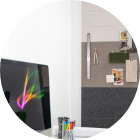
1.
Reflection points between a person and microphone.

2.
As a backdrop for video recording.

3.
Reflection points on the sound-capturing side of mics.

4.
Any nearby hard surface in the recording area.
You May Like These Felt Right Solutions
Sound Control For Your Space

Installation FAQs
For smaller, semi-permanent applications, we recommend using Felt Right commercial grade adhesive tabs. Adhesive tabs make for a quick and easy installation process and are included with every order.
For larger, permanent or overhead applications we encourage installers to use a construction adhesive like Liquid Nails, Roman-555 Extreme Tack Wallcovering Adhesive, or VHB tape to adhere tiles to wall or ceiling. Felt Right tiles are precision fabricated to allow for seamless installation and are a favorite with the construction trade.
Every order of Felt Right tiles comes standard with adhesive tabs. At checkout, you are given the option to choose between Paint Safe and Commercial tabs. For more information on the difference between tabs, see here.
Our felt wall panels are easy to clean and maintain. To remove dust, all you need is a vacuum wand or hose. For spot cleaning, all you need is a damp rag or household cleaner to spray the tiles and wipe them down. For high-traffic, commercial applications, you can disinfect Felt Right tiles with multi-purpose cleaning products. For more information, see our cleaning guide.
There are 2 important steps to uninstalling Felt Right tiles without damaging paint:
Step 1: Carefully separate each tile from the adhesive tabs.
Tiles are removed, leaving the tabs on the wall surface. This is done by inserting fingers between the tile and the wall, away from the tab location, and gradually applying pressure until the tile separates from the tabs. Avoid pulling the tile directly away from the wall in an abrupt or forceful manner as the tile needs time to release from the tabs.
Step 2: Roll the tabs off the wall.
Once the tile has been removed from the wall, leaving the tabs, then remove each tab from the wall. This is done by starting at a corner of the tab, applying pressure, and rolling the tab off of the wall with your finger or thumb. Avoid pulling the tab directly away from the wall.
If you have difficulty getting the tab to begin rolling, you can use a block pencil eraser to start the process.
Yes, you can use Felt Right tiles for ceiling applications. However, we do recommend using Felt Right Commercial-Grade adhesive tabs to create a stronger, semi-permanent bond.
Felt Right tiles are not suitable for flooring applications.
Felt Right tiles are easily installed with a tape measure, a level and a pencil. Simply orient your first few tiles and then build out your design from there. Most designs can be installed in less than an hour!

